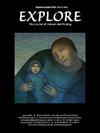The effect of laughter yoga on disease acceptance, treatment adherence and comfort in hemodialysis patients: A randomized controlled study
IF 2.2
4区 医学
Q3 INTEGRATIVE & COMPLEMENTARY MEDICINE
引用次数: 0
Abstract
The aim of this study was to determine the effect of laughter yoga on hemodialysis patients' disease acceptance, treatment adherence and comfort levels. This randomized controlled study was conducted with 42 patients (experimental group=21, control group=21) who were treated in the hemodialysis unit. Hemodialysis patients in the experimental group received 12 sessions of laughter yoga for four weeks, three days a week. Data were collected using Patient Information Form, Disease Acceptance Scale, End-Stage Renal Disease Adherence Questionnaire, and Hemodialysis Comfort Scale. A significant difference was found between the disease acceptance scale (t(41) = 4.39, p < 0.001, d = 1.364), end-stage renal failure adaptation scale (t(41) = 2.69, p = 0.010, d = 0.830) and hemodialysis comfort scale (t(41) = 5.58, p = 0.010, d = 1.710) of hemodialysis patients who underwent laughter yoga. In addition for the Disease Acceptance Scale, the SD of the pre-test scores was 7.51. Accordingly, the MCID thresholds were calculated as 3.75 (0.5 SD), 3.11 (1 SEM), and 6.09 (1.96 SEM). For the End-Stage Renal Disease Adherence Questionnaire, the SD was 178.79, and the MCID was calculated as 89.40 (0.5 SD), 63.47 (1 SEM), and 124.39 (1.96 SEM). For the Hemodialysis Comfort Scale, the SD was 6.43, resulting in MCID estimates of 3.21 (0.5 SD), 2.01 (1 SEM), and 3.94 (1.96 SEM). Laughter yoga practiced during hemodialysis increased acceptance of the disease, adherence to treatment, and comfort (p < 0.05). In contrast, no statistically significant difference was found in the control group (p > 0.05). Increasing hemodialysis patients' acceptance of the disease, adherence to treatment, and comfort levels ensure the successful continuation of the disease management process. The practice of laughter yoga in clinics during hemodialysis sessions is recommended to increase disease acceptance, adherence to treatment and comfort levels.
笑瑜伽对血液透析患者疾病接受度、治疗依从性和舒适度的影响:一项随机对照研究
本研究的目的是确定笑瑜伽对血液透析患者疾病接受度、治疗依从性和舒适度的影响。本研究采用随机对照方法,选取42例在血透病房接受治疗的患者,实验组21例,对照组21例。血液透析患者在实验组接受12次笑声瑜伽,为期四周,每周三天。采用患者信息表、疾病接受度量表、终末期肾病依从性问卷和血液透析舒适度量表收集数据。疾病接受度量表(t(41) = 4.39, p <;0.001, d = 1.364)、终末期肾功能衰竭适应量表(t(41) = 2.69, p = 0.010, d = 0.830)和血液透析舒适量表(t(41) = 5.58, p = 0.010, d = 1.710)。另外,疾病接受度量表的前测分数标准差为7.51。据此,MCID阈值分别为3.75 (0.5 SD)、3.11 (1 SEM)和6.09 (1.96 SEM)。终末期肾病依从性问卷的SD为178.79,MCID分别为89.40 (0.5 SD)、63.47 (1 SEM)和124.39 (1.96 SEM)。对于血液透析舒适量表,SD为6.43,导致MCID估计值为3.21 (0.5 SD), 2.01 (1 SEM)和3.94 (1.96 SEM)。在血液透析期间练习笑声瑜伽增加了对疾病的接受度,对治疗的依从性和舒适度(p <;0.05)。相比之下,对照组无统计学差异(p >;0.05)。增加血液透析患者对疾病的接受程度、对治疗的依从性和舒适度确保了疾病管理过程的成功延续。建议在诊所血液透析期间练习笑瑜伽,以增加疾病的接受度,坚持治疗和舒适度。
本文章由计算机程序翻译,如有差异,请以英文原文为准。
求助全文
约1分钟内获得全文
求助全文
来源期刊

Explore-The Journal of Science and Healing
医学-全科医学与补充医学
CiteScore
3.00
自引率
8.30%
发文量
179
审稿时长
25 days
期刊介绍:
EXPLORE: The Journal of Science & Healing addresses the scientific principles behind, and applications of, evidence-based healing practices from a wide variety of sources, including conventional, alternative, and cross-cultural medicine. It is an interdisciplinary journal that explores the healing arts, consciousness, spirituality, eco-environmental issues, and basic science as all these fields relate to health.
 求助内容:
求助内容: 应助结果提醒方式:
应助结果提醒方式:


